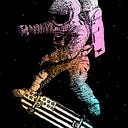
That said more elaborately “There is no difference between theory and practice in theory, but there is often a great deal of difference between theory and practice in practice.”
Design relies on theories that are borne out of observation, experimentation from individuals and organizations at the forefront of design, engineering, and business.
I’ve observed that theories promise to deliver certain results and do not always deliver those results. It happened enough, that I began to ask why. Well, I’ll present my answer in this essay.
An illustration using Ideal Gas Theory
Ideal gas theory relates the pressure & volume to the temperature of a gas. It tells you what the pressure or volume of a known amount of gas molecules will have at a particular temperature.
This theory assumes that:
- Molecular size is negligible compared to the size of the container
- There are no intermolecular forces
The conditions that furnish these assumptions to be true are low pressure/high-temperature environments.
In conditions where assumptions for the ideal gas theory are false, the experimental observation of the gases does not match the explanation offered by the ideal gas theory. In other words, there’s a disconnect between practice (experimental observation) and theory.
We have Ideal Gases what are Real Gases?!
One would think that having an “ideal” gas theory is sufficient. It’s ideal after all, but, gases don’t behave “ideally” in the real world. There are situations where the assumptions for ideal gases do not hold and the real gas theory explains it better (notice how it’s better, not that it explains all of it).
Relating Real and Ideal Gases to Design Theory
Nothing beats first-hand interactions with your end-users/stakeholders/problem. Theories apply under certain conditions and have key assumptions that must be taken into account.
Practicing designers have the added challenge of an industry where a lot is subjective, there can be widely opposing opinions on the effectiveness of solutions for any given problem.
Design theory is useful, only as a starting point, individual designers have the responsibility of uncovering the assumptions and the conditions that enable a theory to hold. That only happens when a designer tries, fails and carefully observes the outcomes from the users and for the business.
How to get the most from design theory
There’s no silver bullet, designers, engineers, and all creative problem solvers will have to pay keen attention to the problems they are solving in its entirety (end users, business, strategy, etc).
They can also:
Be aware of the context
That it worked in a Silicon Valley startup recently, does not mean it’ll work exactly the same way in your established Nigerian company. Ask: “What are the conditions that need to be true for the theory to get results?”
Use the design theories/principles as tools not maxims you must obey
Tools are most effective when the designer understands that they are extensions of herself. She’s focused on getting her problem solved in the most elegant way.
Test the effectiveness of all theories
Collect your own data. Test your theories in the wild, define elements of success and see how they stand up.
